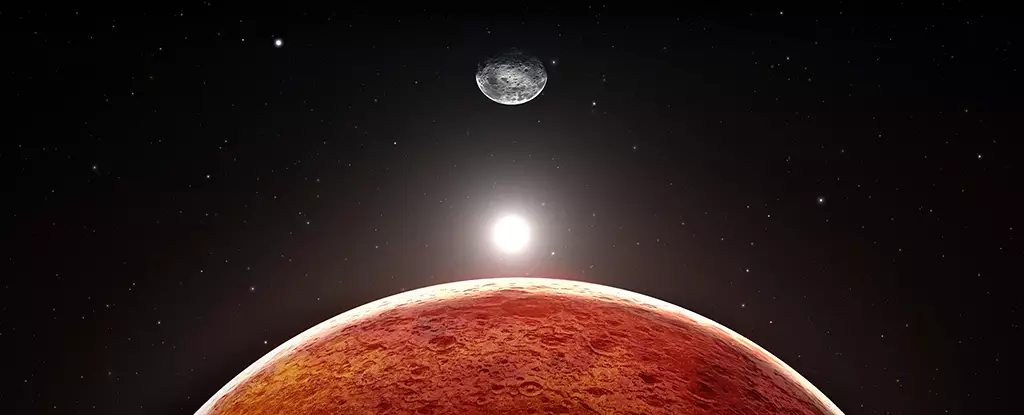The planet Mars, often referred to as the Red Planet, has long captivated astronomers and scientists alike due to its unique and perplexing features. Among these, the planet’s striking triaxial shape presents a puzzle that has spurred various hypotheses over the years. Recently, a bold theory proposed by astronomer Michael Efroimsky from the US Naval Observatory has shifted focus towards the possibility of a long-lost moon, dubbed Nerio, as a potential key to unraveling the geological and morphological enigma of Mars.
What sets Mars apart from other planets is its distinctly elliptical shape—characterized by marked differences in curvature along its three axes. This idiosyncratic form has generated a great deal of perplexity and sparked various debates among experts. Unlike other celestial bodies, Mars exhibits a pronounced tug-of-war between the effects of gravity and its internal geological forces, leading some scientists to speculate on the role of external factors, such as the existence of past moons. Efroimsky’s hypothesis suggests that Nerio, theorized to be approximately one-third the size of Earth’s Moon, may have created the conditions that led to Mars’s peculiar shape through its gravitational influence.
In his compelling research, Efroimsky postulates that this hypothetical moon’s pull could have been strong enough to elongate Mars during its early formation, aligning with what he describes as a synchronous orbit. “An initial, ‘seed’ triaxiality was created by a massive moon orbiting a young and still plastic Mars,” he explains. The concept implies that the presence of Nerio not only influenced Mars’s shape but could also account for the structural asymmetries observable in the planet’s terrain.
By incorporating gravitational mechanics into this narrative, the hypothesis posits that Mars underwent significant geological changes as a result of its interaction with Nerio. As this moon exerted its tidal forces on the young planet, it possibly pulled on primordial magma oceans, which would have influenced volcanic activities and tectonic movements.
The geographic and geological features of Mars lend further credence to Efroimsky’s hypothesis. Mars boasts the most prominent highland regions in the Solar System—specifically Tharsis—alongside the vast canyon known as Valles Marineris and Olympus Mons, the tallest volcano in our solar neighborhood. Efroimsky argues that these prominent features could be traced back to the gravitational interplay with Nerio.
When a large moon like Nerio disintegrates, the remnants might fuel geomorphological developments and beloved landscapes. This could explain the pronounced elevations and distinctive formations scattered across the Martian surface. Essentially, Nerio’s past presence may have acted as a catalyst for the volcanic and tectonic activity that shaped Mars into what we observe today.
While Efroimsky’s hypothesis is compelling, it does not come without its challenges. The absence of concrete evidence regarding the existence of Nerio—no known remnants or indications of such a moon colliding with Mars—complicates the narrative. This critique raises broader questions about the feasibility of the moon’s existence and survival in a dynamic and hostile early Solar System, imbued with high levels of bombardment.
Nonetheless, ongoing research aimed at understanding Martian geology continues to hold potential for unveiling new insights. Future missions and advanced telescopic instruments could provide critical data that might illuminate whether Nerio ever existed or if other factors contributed to Mars’s unusual morphology.
While the hypothesis of a long-lost moon named Nerio offers a fascinating perspective on the enigmatic shape of Mars, it remains an open question in planetary science. As experts quest for answers, the story of Mars’s past may reveal not only the history of our intriguing neighbor but also the complexities of planetary formation and evolution as a whole. The allure of Mars, with its awe-inspiring landscapes and rich geological narratives, is sure to inspire continued exploration and inquiry for decades to come.


Leave a Reply